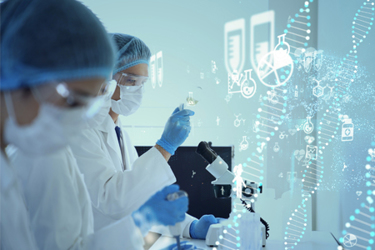Optimizing Plasmid Ratios To Enhance rAAV Production
By Laure Robert, Jonathan Havard, Paul Giroud, Patrick Erbacher, Pauline Schorter, and Quentin Bazot

Adeno-associated viruses (AAVs) are small viruses composed of a single-stranded DNA genome enclosed in a viral capsid formed by the assembly of three proteins. Wild-type AAVs require co-infection with a helper virus, such as adenovirus, vaccinia virus, or herpes simplex virus, for productive infection and replication. During an active infection, the AAV genome remains in the host cell nucleus in an episomal form with sustained RNA expression and can integrate into the host DNA.
Recombinant adeno-associated viruses (rAAVs) are used as DNA delivery vectors in human gene therapy, leveraging AAVs' ability to infect human cells while being non-pathogenic. rAAVs are produced and administered without a helper virus, which reduces the risk of genome integration and enhances the safety profile of these vectors. Various AAV serotypes allow for targeted delivery of the therapeutic Gene of Interest (GOI) to specific organs.
The demand for rAAV is rapidly increasing as clinical pipelines expand and new gene therapy approvals are granted. However, the manufacturing process for AAV remains complex and challenging, especially in scaling up and achieving high yields. There is a significant need to optimize conditions for large-scale AAV production process intensification. The most common method for large-scale rAAV production involves triple transfection in suspension-cultured HEK293 cells, followed by a purification process. Learn how a novel helper plasmid is revolutionizing the production of rAAVs for gene therapy.
Get unlimited access to:
Enter your credentials below to log in. Not yet a member of Cell & Gene? Subscribe today.
